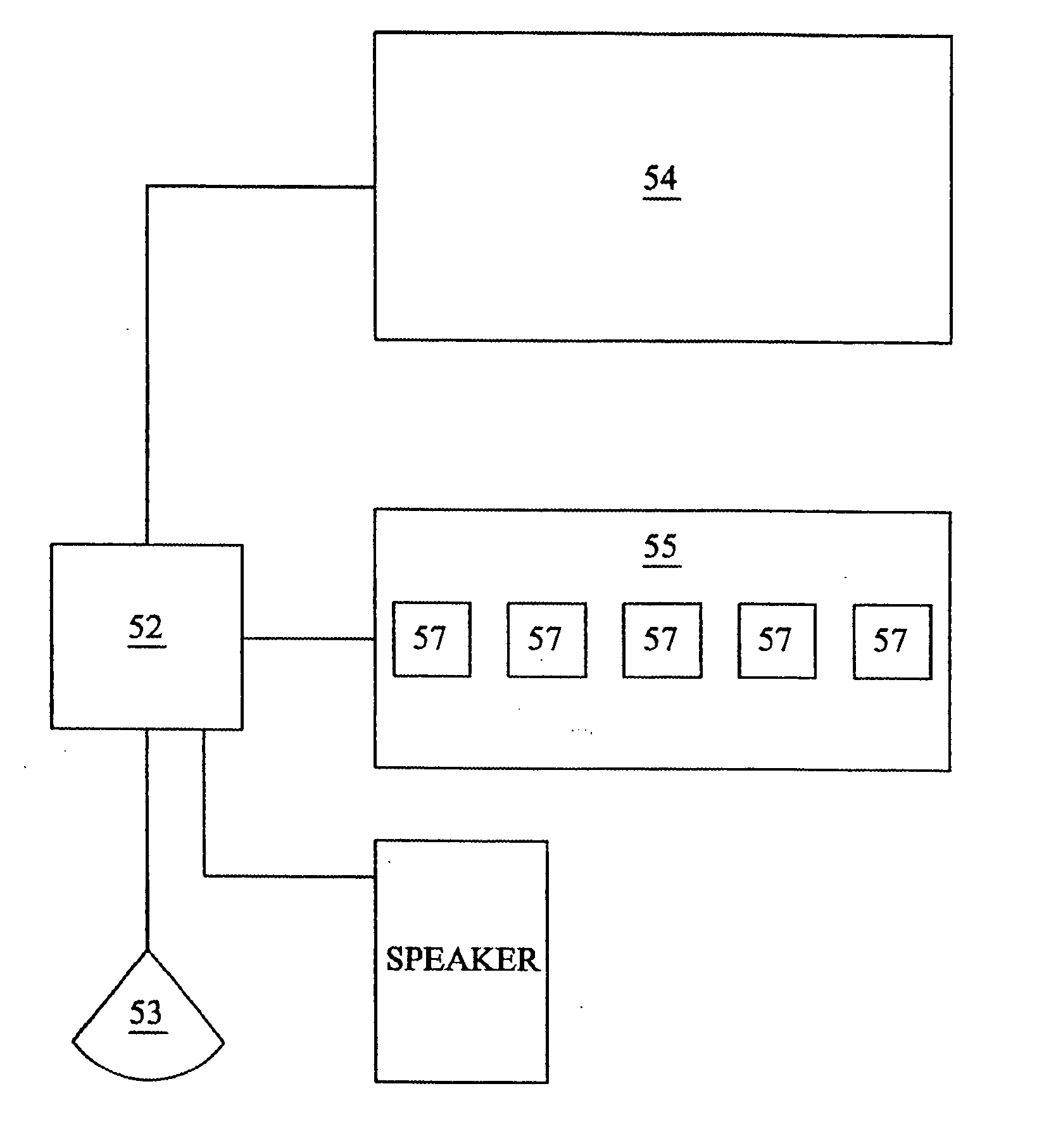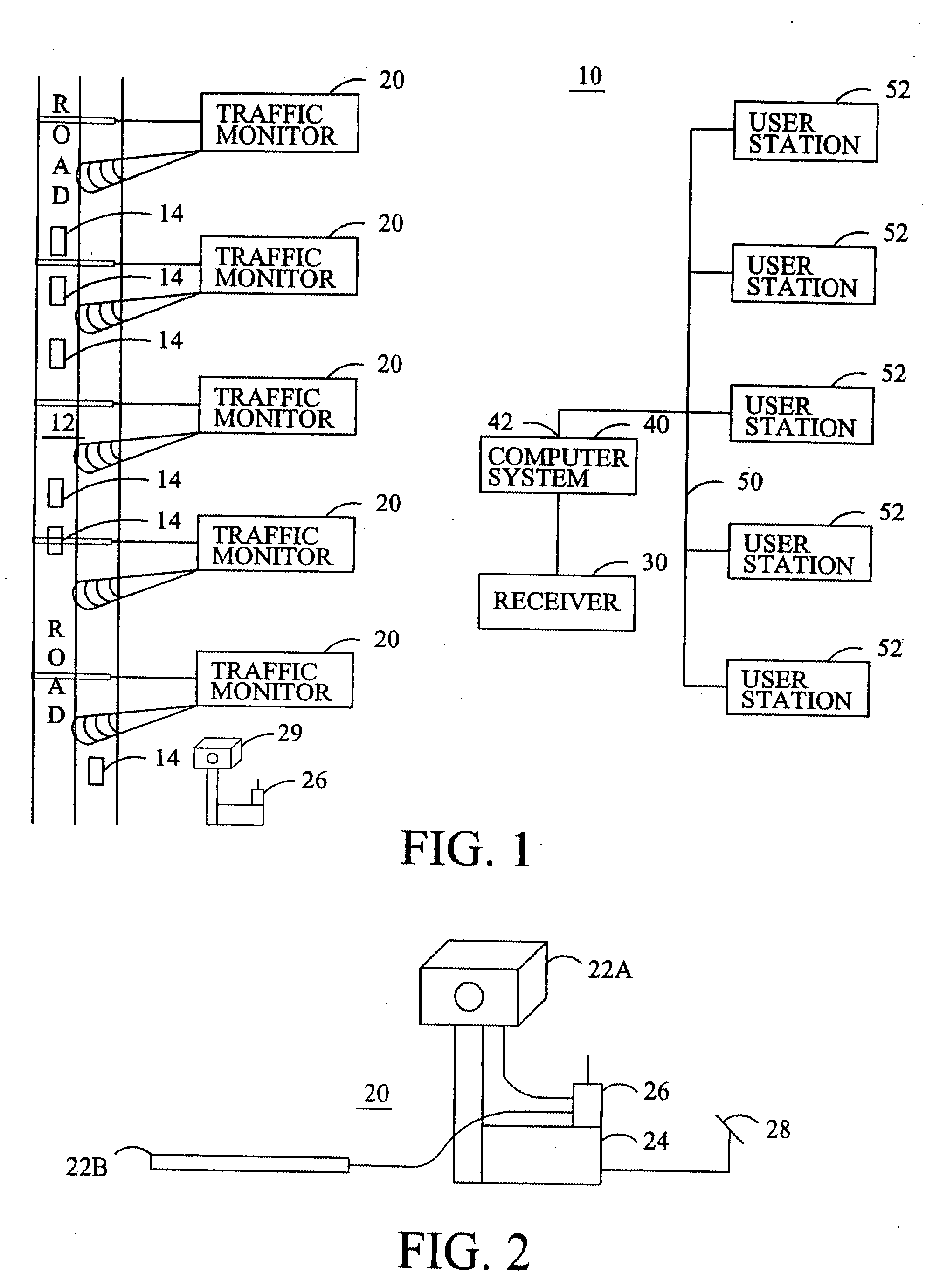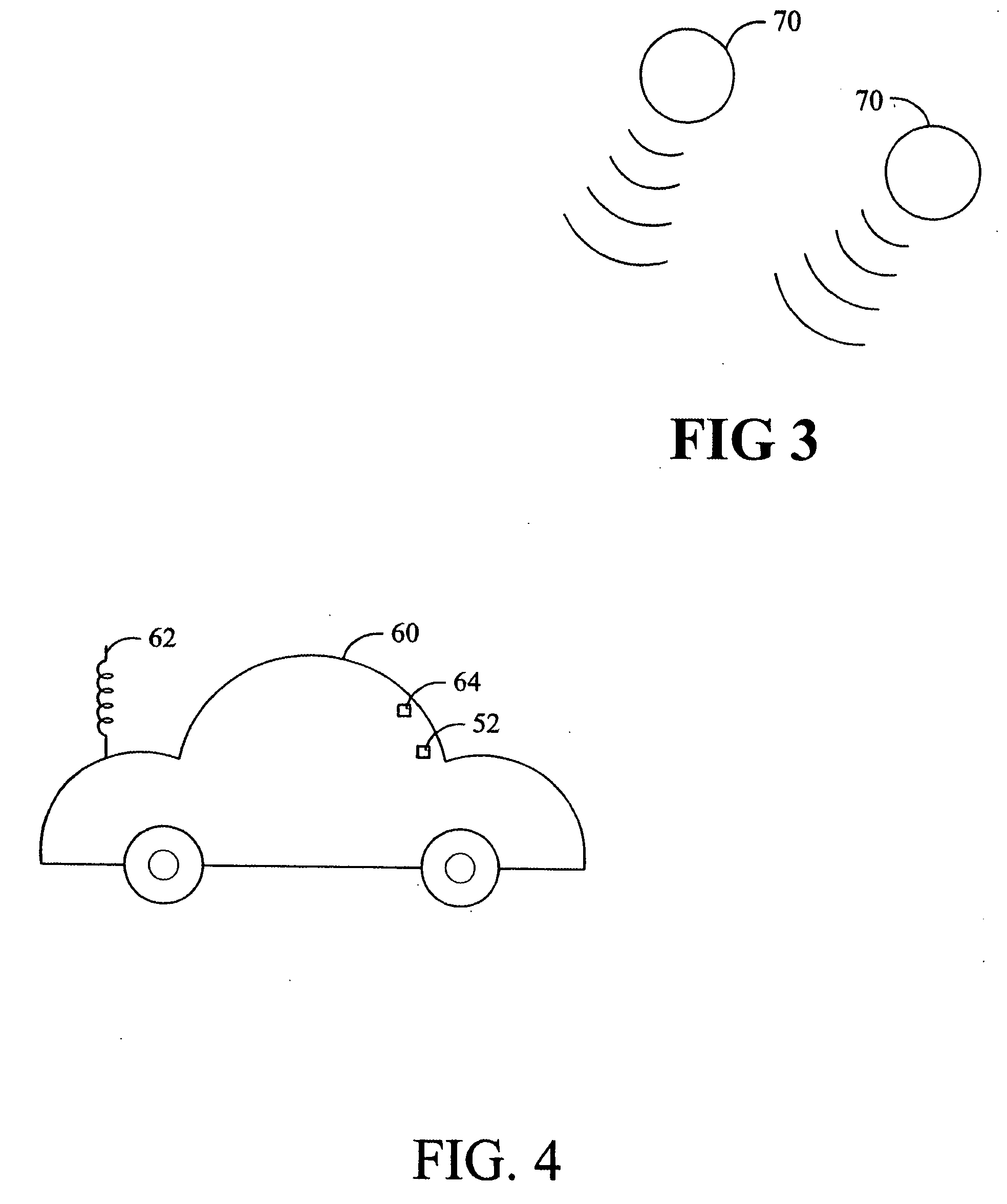System for providing traffic information
- Summary
- Abstract
- Description
- Claims
- Application Information
AI Technical Summary
Benefits of technology
Problems solved by technology
Method used
Image
Examples
Embodiment Construction
[0038] Referring now to the figures, wherein like numerals refer to like elements, FIG. 1 shows a schematic diagram of the system 10 for providing traffic information to a plurality of user stations 52 connected to a network 50. A plurality of traffic monitors 20 are arranged at spaced apart locations along a road 12. The traffic monitors 20 measure traffic information by detecting the speed (velocity) or frequency of vehicles traveling along the road (freeway or highway) 12. For example, in one embodiment, the traffic monitors 20 may detect the speed of individual vehicles 14 traveling along the road 12. Alternatively, the traffic monitors 20 may measure the frequency with which the individual vehicles 14 pass specified points along the road 12.
[0039]FIG. 2 shows a front elevational view of an exemplary embodiment of a traffic monitor 20. The traffic monitor 20 has a detector 22 for measuring or otherwise sensing traffic. FIG. 2 shows two different embodiments 22A and 22B of a det...
PUM
 Login to View More
Login to View More Abstract
Description
Claims
Application Information
 Login to View More
Login to View More - R&D
- Intellectual Property
- Life Sciences
- Materials
- Tech Scout
- Unparalleled Data Quality
- Higher Quality Content
- 60% Fewer Hallucinations
Browse by: Latest US Patents, China's latest patents, Technical Efficacy Thesaurus, Application Domain, Technology Topic, Popular Technical Reports.
© 2025 PatSnap. All rights reserved.Legal|Privacy policy|Modern Slavery Act Transparency Statement|Sitemap|About US| Contact US: help@patsnap.com



